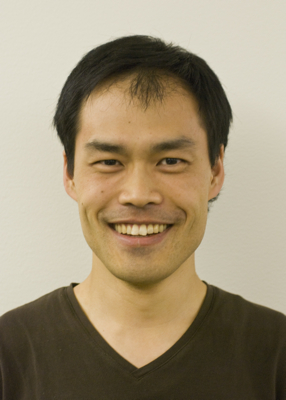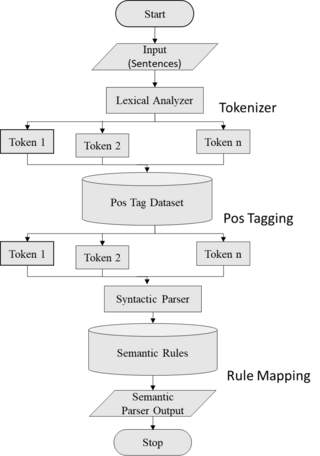
Neuroscience is the scientific study of the nervous system, its functions and disorders. It is a multidisciplinary science that combines physiology, anatomy, molecular biology, developmental biology, cytology, psychology, physics, computer science, chemistry, medicine, statistics, and mathematical modeling to understand the fundamental and emergent properties of neurons, glia and neural circuits. The understanding of the biological basis of learning, memory, behavior, perception, and consciousness has been described by Eric Kandel as the "epic challenge" of the biological sciences.
Word-sense disambiguation (WSD) is the process of identifying which sense of a word is meant in a sentence or other segment of context. In human language processing and cognition, it is usually subconscious/automatic but can often come to conscious attention when ambiguity impairs clarity of communication, given the pervasive polysemy in natural language. In computational linguistics, it is an open problem that affects other computer-related writing, such as discourse, improving relevance of search engines, anaphora resolution, coherence, and inference.
Computational neuroscience is a branch of neuroscience which employs mathematics, computer science, theoretical analysis and abstractions of the brain to understand the principles that govern the development, structure, physiology and cognitive abilities of the nervous system.
Terrence Joseph Sejnowski is the Francis Crick Professor at the Salk Institute for Biological Studies where he directs the Computational Neurobiology Laboratory and is the director of the Crick-Jacobs center for theoretical and computational biology. He has performed pioneering research in neural networks and computational neuroscience.

The Conference and Workshop on Neural Information Processing Systems is a machine learning and computational neuroscience conference held every December. The conference is currently a double-track meeting that includes invited talks as well as oral and poster presentations of refereed papers, followed by parallel-track workshops that up to 2013 were held at ski resorts.
Neuroinformatics is the field that combines informatics and neuroscience. Neuroinformatics is related with neuroscience data and information processing by artificial neural networks. There are three main directions where neuroinformatics has to be applied:
Neural coding is a neuroscience field concerned with characterising the hypothetical relationship between the stimulus and the neuronal responses, and the relationship among the electrical activities of the neurons in the ensemble. Based on the theory that sensory and other information is represented in the brain by networks of neurons, it is believed that neurons can encode both digital and analog information.

Spiking neural networks (SNNs) are artificial neural networks (ANN) that more closely mimic natural neural networks. In addition to neuronal and synaptic state, SNNs incorporate the concept of time into their operating model. The idea is that neurons in the SNN do not transmit information at each propagation cycle, but rather transmit information only when a membrane potential—an intrinsic quality of the neuron related to its membrane electrical charge—reaches a specific value, called the threshold. When the membrane potential reaches the threshold, the neuron fires, and generates a signal that travels to other neurons which, in turn, increase or decrease their potentials in response to this signal. A neuron model that fires at the moment of threshold crossing is also called a spiking neuron model.
Bayesian approaches to brain function investigate the capacity of the nervous system to operate in situations of uncertainty in a fashion that is close to the optimal prescribed by Bayesian statistics. This term is used in behavioural sciences and neuroscience and studies associated with this term often strive to explain the brain's cognitive abilities based on statistical principles. It is frequently assumed that the nervous system maintains internal probabilistic models that are updated by neural processing of sensory information using methods approximating those of Bayesian probability.
The White House BRAIN Initiative is a collaborative, public-private research initiative announced by the Obama administration on April 2, 2013, with the goal of supporting the development and application of innovative technologies that can create a dynamic understanding of brain function.
The Bernstein Network is a research network in the field of computational neuroscience; this field brings together experimental approaches in neurobiology with theoretical models and computer simulations. It unites different scientific disciplines, such as physics, biology, mathematics, medical science, psychology, computer science, engineering and philosophy in the endeavor to understand how the brain functions. The close combination of neurobiological experiments with theoretical models and computer simulations allows scientists of the Bernstein Network to pursue innovative approaches with regard to one of the most complex structures nature has created in the course of evolution: the natural brain.
In natural language processing (NLP), a word embedding is a representation of a word. The embedding is used in text analysis. Typically, the representation is a real-valued vector that encodes the meaning of the word in such a way that the words that are closer in the vector space are expected to be similar in meaning. Word embeddings can be obtained using language modeling and feature learning techniques, where words or phrases from the vocabulary are mapped to vectors of real numbers.
Neural machine translation (NMT) is an approach to machine translation that uses an artificial neural network to predict the likelihood of a sequence of words, typically modeling entire sentences in a single integrated model.
Anthony M. Zador is an American neuroscientist and the Alle Davis Harris Professor of Biology and Chair of Neuroscience at Cold Spring Harbor Laboratory. He is a co-founder, in 2004, of the Computational and Systems Neuroscience (COSYNE) conference, and of the NAISYS meeting about the intersection of neuroscience and artificial intelligence. Dr. Zador's research has focused on understanding the circuits of the auditory cortex in rodents. More recently, he has pioneered a new approach to connectome mapping using the methods of molecular biology, which may dramatically decrease the cost and improve the speed of mapping neuronal circuits at the single cell level.

Wei Ji Ma is a professor at New York University in the Department of Psychology and the Center for Neural Science. Ma focuses on the areas of perception, decision-making, and memory. He holds a PhD in theoretical physics from University of Groningen in the Netherlands. Ma is the 2021 recipient of the Jeffrey L. Elman Prize for Scientific Achievement and Community Building from the Cognitive Science Society.
The International Brain Laboratory (IBL) is a collaborative research group that aims to develop the first global model of decision making in mice. In its first phase, IBL members are recording 100,000's of neurons across virtually all brain structures in mice performing the very same decision. IBL was officially launched in September 2017 thanks to a $10 million grant from Simons Foundation and a £10 million grant from the Wellcome Trust.

Semantic parsing is the task of converting a natural language utterance to a logical form: a machine-understandable representation of its meaning. Semantic parsing can thus be understood as extracting the precise meaning of an utterance. Applications of semantic parsing include machine translation, question answering, ontology induction, automated reasoning, and code generation. The phrase was first used in the 1970s by Yorick Wilks as the basis for machine translation programs working with only semantic representations. Semantic parsing is one of the important tasks in computational linguistics and natural language processing.

Li Zhaoping, born in Shanghai, China, is a neuroscientist at the University of Tübingen in Germany. She is the only woman to win the first place in CUSPEA, an annual national physics competition in China, during CUSPEA's 10-year history (1979–1989). She proposed V1 Saliency Hypothesis (V1SH), and is the author of Understanding vision: theory, models, and data published by Oxford University Press.
Alexandre Pouget is a full Professor at the University of Geneva in the department of basic neurosciences.
Surya Ganguli is a university professor at Stanford University and a visiting research professor at Google. Ganguli is primarily known for his work on neural networks and deep learning, although he has also published papers on theoretical physics. He presently runs the Neural Dynamics and Computation Lab at Stanford, where he aims to reverse engineer how networks of neurons and synapses cooperate across multiple scales of space and time to facilitate sensory perception, motor control, memory, and other cognitive functions. He is also known for being a prolific public speaker and lecturer, having been invited to give over 200 talks at various universities, institutes, workshops, conferences, and symposiums since 2005.





